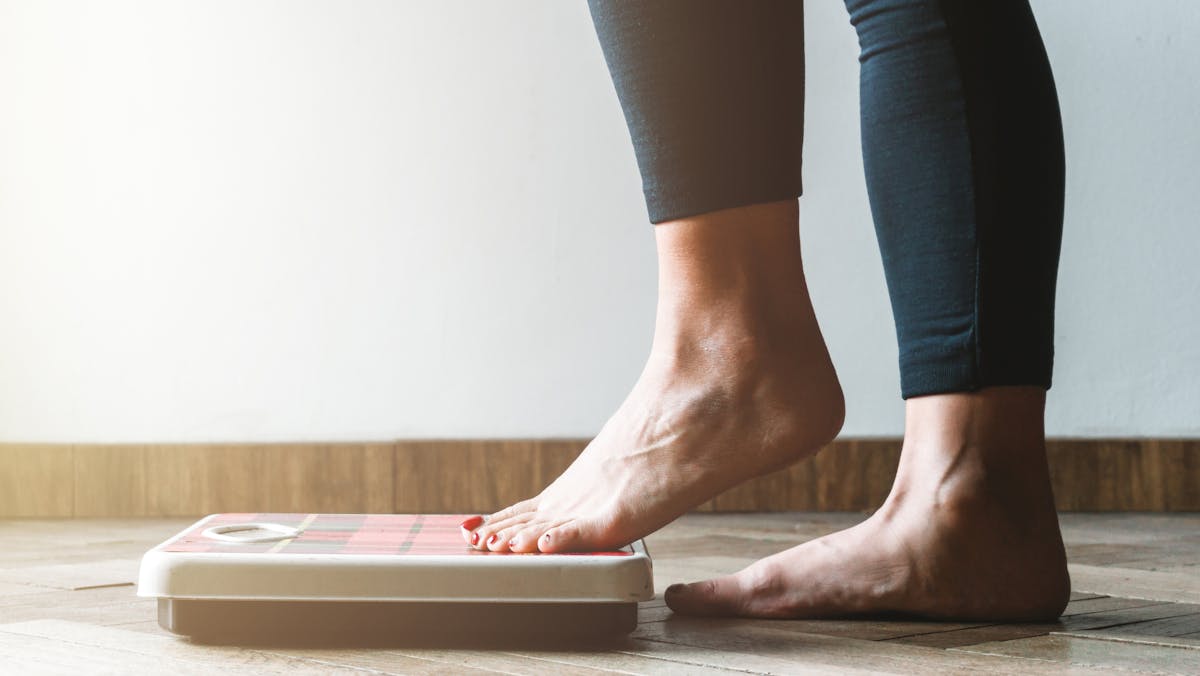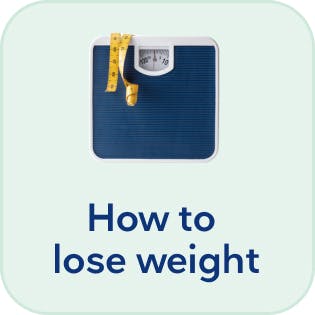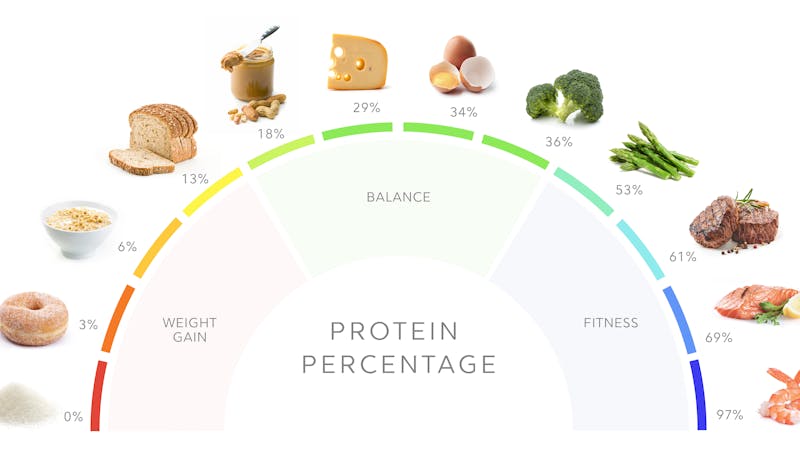Evidence based
How to measure healthy weight loss
You may have heard that not all weight loss is the same — and that you want to focus on achieving healthy weight loss. But how do you know if you are losing weight in a healthy way?
The key is making sure you measure the most helpful markers.
In this guide, we first define what we mean by healthy weight loss. Then, we’ll explain the most important markers to follow for healthy weight loss. Here’s a hint: they include an array of measurements you can track objectively as well as more subjective self-assessments of your behaviors and feelings.
And, if you want to go beyond measurements and learn how to get started improving your metabolic health, we also link to our other resources that help you dig deeper into the “how” and “why” behind healthy weight loss.
Key takeaways
Metabolic health is keyMeasuring body composition and metabolic health are two of the most important aspects of healthy weight loss.
Control what you can control
You can’t always control the outcome, but you can control your behaviors.
Yes, you are allowed to enjoy it!
Enjoying your meals is an often overlooked aspect of healthy weight loss.


Start your FREE 30-day trial!
Get instant access to healthy low-carb and keto meal plans, fast and easy recipes, weight loss advice from medical experts, and so much more. A healthier life starts now with your free trial!
Start FREE trial!1. What does ‘healthy weight loss’ mean?
Before we talk about measuring healthy weight loss, you need to understand what healthy weight loss means. Losing weight in a healthy way means that you do the following:
- Set realistic weight loss goals in terms of the time it takes to lose weight and the amount of weight you want to lose.
- Get adequate nutrition (especially protein) in whatever diet you choose.
- Manage hunger.
- Choose foods that help protect lean body mass.
- Choose foods that help improve metabolic health.
- Get enough protein and energy from your diet to protect your resting metabolic rate.
- Enjoy your diet, so you can maintain it long-term.
- Follow a diet that fits your lifestyle.
While this list may seem challenging, the right diet and lifestyle can help you check all the boxes. You can learn more about finding the right healthy weight loss diet for you in our dedicated guide on the topic.
Once you have chosen a diet, how do you know if you are making progress toward healthy weight loss? The remainder of this guide will help you understand what you should track and how you can judge success.
2. Measuring healthy weight loss: Outcomes
Remember that an important part of healthy weight loss is to set realistic expectations. That means you shouldn’t set your goals based on other people’s experiences or their social media posts. In other words, “You do you.”
Or, watch a summary of this guide where we talk about how we can make sure to measure the most healthful markers.
Use the scale wisely
Most people are familiar with using a scale to measure their weight. But just because it is the most common way to track weight loss doesn’t mean it’s the best way.
Healthy weight loss prioritizes losing fat, especially around your midsection, and not losing muscle. A scale can’t tell the difference between fat and muscle. That’s why, when you’re using your scale to track your progress, we suggest you include other measurements to help you determine if your weight loss is healthy.
Also, keep in mind that weight can vary from day to day based on fluid retention, hormonal changes, and time of day, among other things. These normal fluctuations can be a source of anxiety for some. Checking your weight once per week rather than every day and combining it with other measures of healthy weight loss can help shift your focus and relieve the stress that can come with frequent weighing.
Look for changes in how your clothes fit
If your weight isn’t changing much — or at all — but your pants are looser, that‘s an excellent sign that you are losing abdominal fat. A loose waistband is the most basic indicator of positive changes in body composition, but you can also consider much more detailed tests.
Test your body composition


The term body composition refers to the amount of fat mass and lean body mass — muscle and bone — that you have. One of the keys to healthy weight loss is losing predominantly fat mass with minimal loss of lean mass.
You can measure body composition with any of the following tests:
- Waist circumference
- DEXA scan
- Bioimpedance scales
- Hydrostatic weight
- BodPod air displacement
The best means of measuring body composition depends on your priorities:
Easiest and cheapest: Waist circumference
Most accurate: DEXA
Best for regular home use: Bioimpedance scales
Best of the rest: Hydrostatic weight and BOD POD if they are readily available
These quick tips will help you plan how to track your own measurements:
- One publication suggests defining “ideal” body fat as around or below 28% for women or 15% for men.1 However, this may not be realistic for most people. The most important goal is to move in the right direction, with your fat mass trending down while building or maintaining your lean mass.
- After getting a baseline measurement, give yourself enough time with lifestyle changes — usually two to three months — before rechecking any of the advanced body composition tests. That’s enough time to let you know if you are on the right track.
- You should not have a DEXA scan more than once every four to six months because of the small amount of radiation delivered during the test. Follow your DEXA results over time to see if you are increasing your lean body mass and decreasing your visceral and overall fat mass. You can also check on your bone mass to make sure that it’s stable or improving.
- You can check other tests, like bioimpedance scales or hydrostatic weight, as often as you like. However, as with regular scales, we discourage daily checking, as natural day-to-day variation occurs. Bioimpedance scales and hydrostatic weights don’t give as much detailed information as DEXA scans, but you can still follow trends for lean and fat mass over time.
Our detailed, evidence-based guide on body composition has more information on how to lose fat and gain muscle.

Measure metabolic health markers
Bodyweight alone doesn’t tell you much about your metabolic health. Some evidence suggests that you can significantly improve your metabolic health without meaningful weight loss.2 And if you are losing weight, the type of weight loss may be more important than the absolute amount.
Tracking your body composition — your fat mass, muscle mass, and overall lean mass — gives you better insight into your metabolic health. For example, when your waist circumference shrinks, this likely indicates that you are losing fat from around your liver, pancreas, and other internal organs and are thereby improving your metabolic health.3
But metabolic health also involves blood pressure, blood sugar, lipids, and metabolic rate.
Home blood pressure cuffs are widely available and fairly easy to use. You can learn more in our guide on blood pressure.
Your doctor may order blood tests for your fasting blood sugar or a hemoglobin A1c (HbA1c). But a continuous glucose monitor (CGM), a small device that gives you a running reading of your blood glucose level, may be an even more helpful way to monitor your blood sugar. You can learn more about CGMs in our detailed guide.
Another helpful metric is your resting metabolic rate (RMR). Your RMR is roughly the amount of energy, or calories, you burn naturally, without exercise, during the day. You can hear a detailed discussion about RMR and how it can impact your health in our podcast interview with Kirsty Woods, Ph.D.
Our complete guide on measuring metabolic health gives you even more information about tracking these important health metrics.
Check non-scale victories
When you lose weight in a healthy way, you may notice other changes that don’t have to do with weight, body composition, or metabolic health measurements.
- Are you able to go four or five hours without eating between meals, and are you able to fast for at least 12 hours overnight without craving food or having strong feelings of hunger?
- Do you have stable energy levels throughout the day?
- Have you noticed any positive changes to your heartburn, skin, or headaches?
- Have symptoms of irritable bowel syndrome or joint pain improved?
- How is your mental health? Do you have better concentration or less “brain fog?”
If you answered “yes” to any of these questions, you may be experiencing underlying improvements in your overall health and metabolism that aren’t yet apparent from looking at the scale or other measurements.
3. Measuring healthy weight loss: Behaviors


Sometimes when it comes to healthy weight loss, you may feel like you are doing “everything right,” but your measurements or lab tests aren’t responding as you had hoped. Part of the problem is that, although you can control your behaviors, you can’t always control your outcomes.
Paying attention to the behaviors and patterns of thinking that lead to success can help you reach your health goals over the long run.
Ask yourself the following questions:
- Are you reducing or eliminating ultra-processed food and food with added sugar, such as soda, candy, and baked goods?
- Do you see your way of eating as a long-term lifestyle rather than a short-term diet? And does your diet fit into your lifestyle without difficulty?
- Are you eating adequate protein? (At least 1.2 grams per kilo and more than 1.6 grams per kilo if you are trying to add muscle.)
- Are you eating primarily whole foods and using packaged or processed products only as an occasional supplement rather than a regular replacement for whole foods?
- Do you look forward to your meals rather than dread eating bland diet food?
- Can you navigate eating out, special occasions, and vacations with ease?
- Are you staying physically active in a way you enjoy?
If you are succeeding in most of these behavioral changes, congratulations! This is a significant step toward improving your chances of reaching your weight and health goals.
Unfortunately, having more consistent behaviors may make positive changes on the scale and to other measurements more likely, but it doesn’t guarantee them.
Even if you don’t see dramatic changes on the scale or in other measurements of metabolic health, look for other beneficial changes in how you feel. Sometimes, simply having a sense of control in your relationship with food is a huge first step toward other health improvements.
How to measure healthy weight loss - the evidence
This guide is written by Dr. Bret Scher, MD and was last updated on June 17, 2022. It was medically reviewed by Dr. Michael Tamber, MD on September 27, 2021.
The guide contains scientific references. You can find these in the notes throughout the text, and click the links to read the peer-reviewed scientific papers. When appropriate we include a grading of the strength of the evidence, with a link to our policy on this. Our evidence-based guides are updated at least once per year to reflect and reference the latest science on the topic.
All our evidence-based health guides are written or reviewed by medical doctors who are experts on the topic. To stay unbiased we show no ads, sell no physical products, and take no money from the industry. We're fully funded by the people, via an optional membership. Most information at Diet Doctor is free forever.
Read more about our policies and work with evidence-based guides, nutritional controversies, our editorial team, and our medical review board.
Should you find any inaccuracy in this guide, please email andreas@dietdoctor.com.
American Journal of Clinical Nutrition 2012: Percentage of body fat cutoffs by sex, age, and race-ethnicity in the US adult population from NHANES 1999-2004 [non-controlled study; weak evidence] ↩
JCI Insight 2019: Dietary carbohydrate restriction improves metabolic syndrome independent of weight loss
[randomized trial; moderate evidence]
↩Diabetes Care 2007: Reduction of visceral fat is associated with decrease in the number of metabolic risk factors in Japanese men [nonrandomized study; weak evidence] ↩








